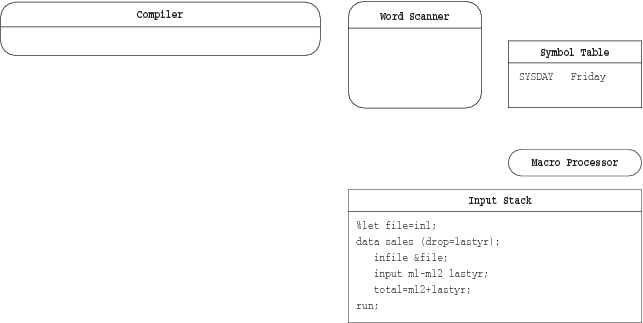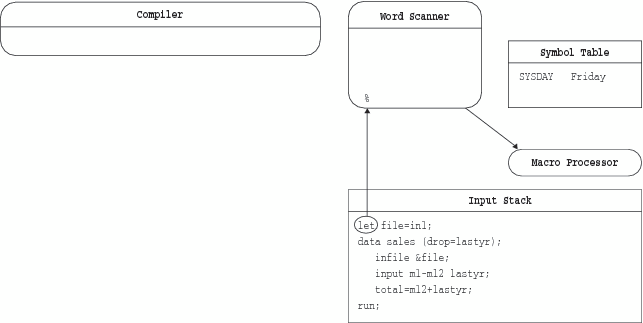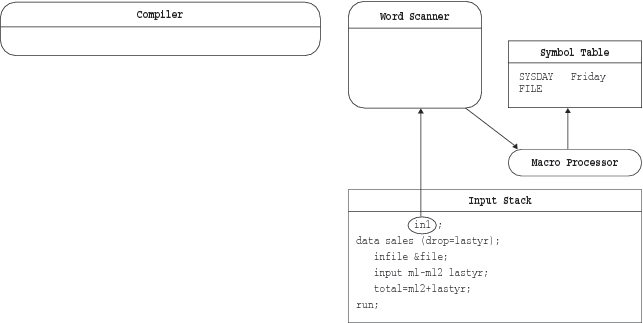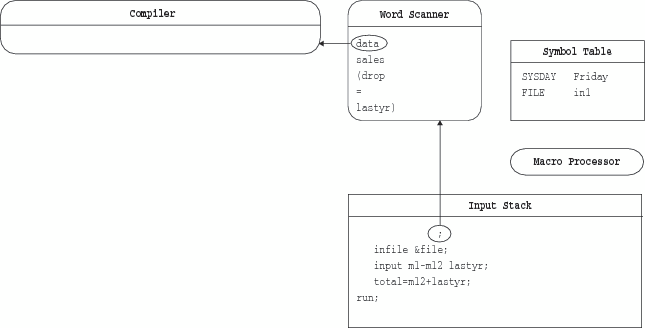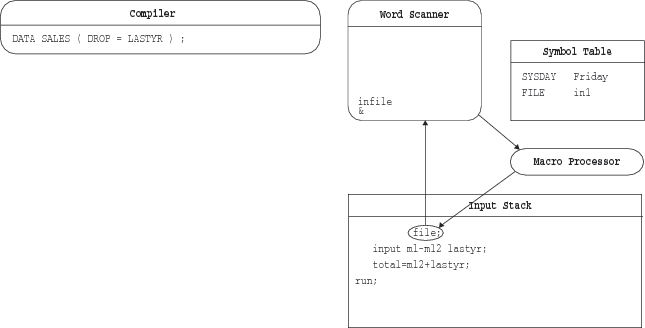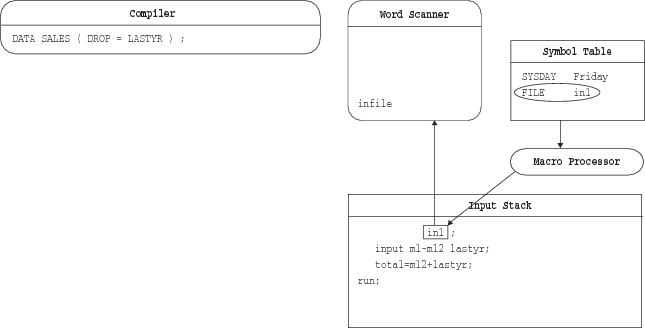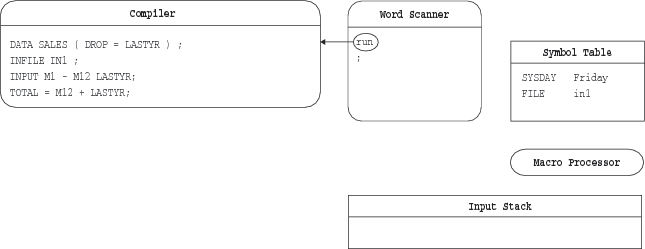How SAS Processes Statements with Macro Activity
In a program
with macro activity, the macro processor can generate text that is
placed on the input stack to be tokenized by the word scanner. The
example in this section shows you how the macro processor creates
and resolves a macro variable. To illustrate how the compiler and
the macro processor work together, the following figure contains the
macro processor and the macro variable symbol table. SAS creates the
symbol table at the beginning of a SAS session to hold the values
of automatic and global macro variables. SAS creates automatic macro
variables at the beginning of a SAS session. For the sake of illustration,
the symbol table is shown with only one automatic macro variable,
SYSDAY.
Whenever
the word scanner encounters a macro trigger, it sends information
to the macro processor. A macro trigger is either an ampersand (&)
or percent sign (%) followed by a nonblank character. As it did in
the previous example, the word scanner begins to process this program
by examining the first characters in the input stack. In this case,
the word scanner finds a percent sign (%) followed by a nonblank character.
The word scanner recognizes this combination of characters as a potential
macro language element, and triggers the macro processor to examine
% and LET, as shown in the following figure.
When the macro processor
recognizes a macro language element, it begins to work with the word
scanner. In this case, the macro processor removes the %LET statement,
and writes an entry in the symbol table, as shown in the following
figure.
From the time the word
scanner triggers the macro processor until that macro processor action
is complete, the macro processor controls all activity. While the
macro processor is active, no activity occurs in the word scanner
or the DATA step compiler.
When the macro processor
is finished, the word scanner reads the next token (the DATA keyword
in this example) and sends it to the compiler. The word scanner triggers
the compiler, which begins to pull tokens from the top of the queue,
as shown in the following figure.
As it processes each
token, SAS removes the protection that the macro quoting functions
provide to mask special characters and mnemonic operators. For more
information, see Macro Quoting.
If the word scanner
finds an ampersand followed by a nonblank character in a token, it
triggers the macro processor to examine the next token, as shown in
the following figure.
The macro processor
examines the token and recognizes a macro variable that exists in
the symbol table. The macro processor removes the macro variable name
from the input stack and replaces it with the text from the symbol
table, as shown in the following figure.
The compiler continues
to request tokens, and the word scanner continues to supply them,
until the entire input stack has been read as shown in the following
figure.
If the end of the input
stack is a DATA step boundary, as it is in this example, the compiler
compiles and executes the step. SAS then frees the DATA step task.
Any macro variables that were created during the program remain in
the symbol table. If the end of the input stack is not a step boundary,
the processed statements remain in the compiler. Processing resumes
when more statements are submitted to the input stack.
